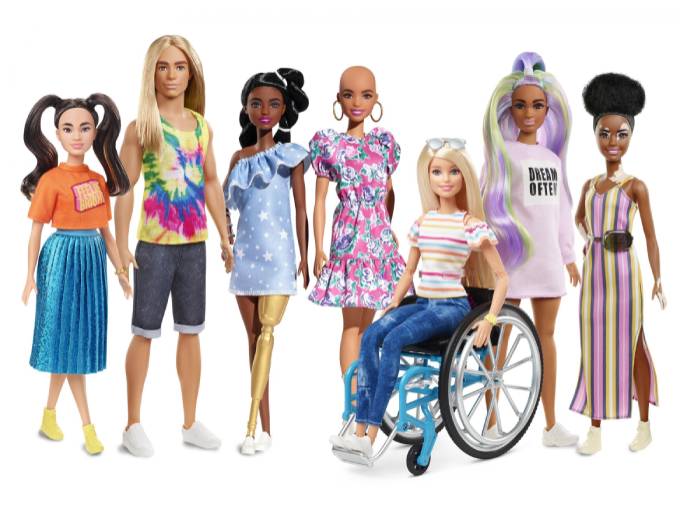The number-one factor driving doll purchases among moms and daughters is whether or not the doll looks like them, according to new research from ViacomCBS Consumer Products.
The company’s “More Than Dolls” study, which explores diversity in the dolls category and which considerations impact parents’ purchasing decisions, found that Black girls are most likely to own dolls that reflect their race. Hispanic and Asian girls tend to have a more diverse mix of dolls, and white girls are the least likely to own diverse dolls.
When it comes to making purchases, nearly 66% of Black and Hispanic moms said they go out of their way to buy brands that are working to be more inclusive. Bearing this out at market, sales for Mattel’s Barbie brand grew by 23% in Q2 2016 following the launch of its diverse Fashionistas line (pictured).
The majority of moms also said they encourage their daughters to play with dolls of a different race/ethnicity than their own (66%), and they believe having diverse dolls will help their children learn about racial and cultural diversity (77%).
However, 52% of Black moms and 49% of Hispanic moms said there aren’t enough dolls reflecting their race/ethnicity available at retail. When buying dolls for their children, the biggest factors moms from historically excluded communities are looking for include matching skin tone (71%), hair (56%), body type (31%) and eyes (26%).
But diversity in dolls goes beyond physical appearance. The majority (53%) of moms surveyed said there aren’t enough dolls that represent strong and positive role models from Asian, Black and Hispanic communities. They want products that authentically represent these cultures and also reflect possibilities for their daughters when it comes to hobbies and professions.
The “More Than Dolls” study was conducted in 2021 through partnerships with research firms Horowitz Research and C Space. Surveys and interviews were conducted with 900 moms and their daughters (ages two to nine), and participants also created video diaries to expand on the statistical findings.
























